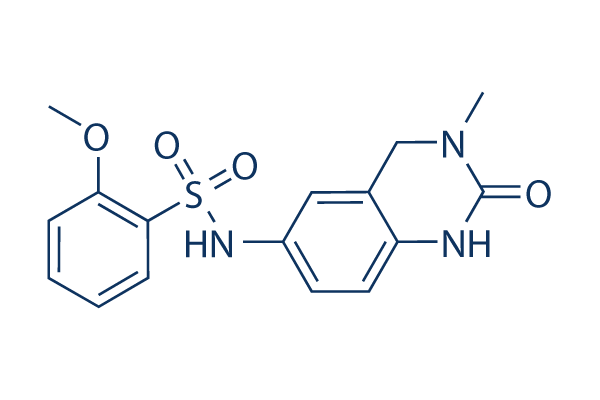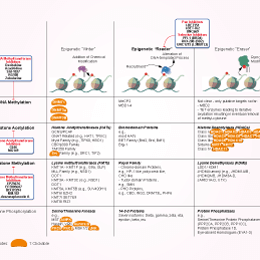
- Bioactive Compounds
- By Signaling Pathways
- PI3K/Akt/mTOR
- Epigenetics
- Methylation
- Immunology & Inflammation
- Protein Tyrosine Kinase
- Angiogenesis
- Apoptosis
- Autophagy
- ER stress & UPR
- JAK/STAT
- MAPK
- Cytoskeletal Signaling
- Cell Cycle
- TGF-beta/Smad
- DNA Damage/DNA Repair
- Compound Libraries
- Popular Compound Libraries
- Customize Library
- Clinical and FDA-approved Related
- Bioactive Compound Libraries
- Inhibitor Related
- Natural Product Related
- Metabolism Related
- Cell Death Related
- By Signaling Pathway
- By Disease
- Anti-infection and Antiviral Related
- Neuronal and Immunology Related
- Fragment and Covalent Related
- FDA-approved Drug Library
- FDA-approved & Passed Phase I Drug Library
- Preclinical/Clinical Compound Library
- Bioactive Compound Library-I
- Bioactive Compound Library-Ⅱ
- Kinase Inhibitor Library
- Express-Pick Library
- Natural Product Library
- Human Endogenous Metabolite Compound Library
- Alkaloid Compound LibraryNew
- Angiogenesis Related compound Library
- Anti-Aging Compound Library
- Anti-alzheimer Disease Compound Library
- Antibiotics compound Library
- Anti-cancer Compound Library
- Anti-cancer Compound Library-Ⅱ
- Anti-cancer Metabolism Compound Library
- Anti-Cardiovascular Disease Compound Library
- Anti-diabetic Compound Library
- Anti-infection Compound Library
- Antioxidant Compound Library
- Anti-parasitic Compound Library
- Antiviral Compound Library
- Apoptosis Compound Library
- Autophagy Compound Library
- Calcium Channel Blocker LibraryNew
- Cambridge Cancer Compound Library
- Carbohydrate Metabolism Compound LibraryNew
- Cell Cycle compound library
- CNS-Penetrant Compound Library
- Covalent Inhibitor Library
- Cytokine Inhibitor LibraryNew
- Cytoskeletal Signaling Pathway Compound Library
- DNA Damage/DNA Repair compound Library
- Drug-like Compound Library
- Endoplasmic Reticulum Stress Compound Library
- Epigenetics Compound Library
- Exosome Secretion Related Compound LibraryNew
- FDA-approved Anticancer Drug LibraryNew
- Ferroptosis Compound Library
- Flavonoid Compound Library
- Fragment Library
- Glutamine Metabolism Compound Library
- Glycolysis Compound Library
- GPCR Compound Library
- Gut Microbial Metabolite Library
- HIF-1 Signaling Pathway Compound Library
- Highly Selective Inhibitor Library
- Histone modification compound library
- HTS Library for Drug Discovery
- Human Hormone Related Compound LibraryNew
- Human Transcription Factor Compound LibraryNew
- Immunology/Inflammation Compound Library
- Inhibitor Library
- Ion Channel Ligand Library
- JAK/STAT compound library
- Lipid Metabolism Compound LibraryNew
- Macrocyclic Compound Library
- MAPK Inhibitor Library
- Medicine Food Homology Compound Library
- Metabolism Compound Library
- Methylation Compound Library
- Mouse Metabolite Compound LibraryNew
- Natural Organic Compound Library
- Neuronal Signaling Compound Library
- NF-κB Signaling Compound Library
- Nucleoside Analogue Library
- Obesity Compound Library
- Oxidative Stress Compound LibraryNew
- Plant Extract Library
- Phenotypic Screening Library
- PI3K/Akt Inhibitor Library
- Protease Inhibitor Library
- Protein-protein Interaction Inhibitor Library
- Pyroptosis Compound Library
- Small Molecule Immuno-Oncology Compound Library
- Mitochondria-Targeted Compound LibraryNew
- Stem Cell Differentiation Compound LibraryNew
- Stem Cell Signaling Compound Library
- Natural Phenol Compound LibraryNew
- Natural Terpenoid Compound LibraryNew
- TGF-beta/Smad compound library
- Traditional Chinese Medicine Library
- Tyrosine Kinase Inhibitor Library
- Ubiquitination Compound Library
-
Cherry Picking
You can personalize your library with chemicals from within Selleck's inventory. Build the right library for your research endeavors by choosing from compounds in all of our available libraries.
Please contact us at info@selleckchem.com to customize your library.
You could select:
- Antibodies
- Bioreagents
- qPCR
- 2x SYBR Green qPCR Master Mix
- 2x SYBR Green qPCR Master Mix(Low ROX)
- 2x SYBR Green qPCR Master Mix(High ROX)
- Protein Assay
- Protein A/G Magnetic Beads for IP
- Anti-Flag magnetic beads
- Anti-Flag Affinity Gel
- Anti-Myc magnetic beads
- Anti-HA magnetic beads
- Poly DYKDDDDK Tag Peptide lyophilized powder
- Protease Inhibitor Cocktail
- Protease Inhibitor Cocktail (EDTA-Free, 100X in DMSO)
- Phosphatase Inhibitor Cocktail (2 Tubes, 100X)
- Cell Biology
- Cell Counting Kit-8 (CCK-8)
- Animal Experiment
- Mouse Direct PCR Kit (For Genotyping)
- New Products
- Contact Us
PFI-1 (PF-6405761)
Home Epigenetics Epigenetic Reader Domain inhibitor PFI-1 (PF-6405761)
For research use only.
PFI-1 (PF-6405761) is a highly selective BET (bromodomain-containing protein) inhibitor for BRD4 with IC50 of 0.22 μM and for BRD2 with IC50 of 98 nM in a cell-free assay.

PFI-1 (PF-6405761) Chemical Structure
CAS No. 1403764-72-6
Purity & Quality Control
Batch:
Purity:
99.98%
99.98
PFI-1 (PF-6405761) Related Products
| Related Targets | BET p300/CBP BRPF bromodomain | Click to Expand |
|---|---|---|
| Related Products | ICG-001 Birabresib (OTX015) I-BET151 (GSK1210151A) Molibresib (I-BET-762) SGC-CBP30 EED226 Apabetalone (RVX-208) KG-501 CPI-203 compound 3i (666-15) PFI-3 AZD5153 6-hydroxy-2-naphthoic acid Mivebresib (ABBV-075) ABBV-744 UNC1215 I-BRD9 Bromosporine GSK1324726A (I-BET726) PLX51107 PF-CBP1 HCl | Click to Expand |
| Related Compound Libraries | Kinase Inhibitor Library FDA-approved Drug Library Natural Product Library Bioactive Compound Library-I Highly Selective Inhibitor Library | Click to Expand |
Signaling Pathway
Biological Activity
| Description | PFI-1 (PF-6405761) is a highly selective BET (bromodomain-containing protein) inhibitor for BRD4 with IC50 of 0.22 μM and for BRD2 with IC50 of 98 nM in a cell-free assay. | ||||
|---|---|---|---|---|---|
| Targets |
|
| In vitro | ||||
| In vitro | PFI-1 binds to with cyclic AMP response binding protein with KD of 49 μM. PFI-1 has an EC50 of 1.89 μM for the inhibition of IL6 production from human blood mononuclear cells stimulated by LPS. [1] PFI-1 induces dose-dependent reduction of cell viability in T4302 CD133+ cells. [2] PFI-1 inhibits the proliferating of three NET cell lines (Bon-1 derived from a pancreatic NET, and H727 and H720 derived from lung NETs). [3] | |||
|---|---|---|---|---|
| Cell Research | Cell lines | T4302 CD133+ cells | ||
| Concentrations | 1 mM | |||
| Incubation Time | 5 days | |||
| Method | To determine dose response, cells are aliquoted into 96-well plate at 5 × 103 cells per well in triplicates. PFI-1 is added by 2- or 4-fold serial dilutions. Cell number is measured 5 days after plating using the CellTiter-Glo Kit and normalized to corresponding vehicle-treated groups. IC50 values are calculated by the GraphPad Prism 5 software using the 4-parameter logistic nonlinear regression model. To calculate the relative growth of cells, averaged cell titers of each group on day 1 are assigned a value of 1. All subsequent cell titer values are normalized accordingly. |
|||
| In Vivo | ||
| In vivo | PFI-1 administrated (1 mg/kg i.v.) in the rat results in the volume of distribution of 1 L/kg, the plasma clearance of 18/mL·min–1·kg–1 and half-life of 1 hour. PFI-1 oral dosed (2 mg/kg) in the rat results in the oral bioavailability as low as 32%. PFI-1 administrated (2 mg/kg s.c.) in the mouse results in a Cmax of 58 ng/mL with a Tmax of 1 h and a half-life of approximately 2 hours. [1] | |
|---|---|---|
| Animal Research | Animal Models | Rats |
| Dosages | 1 mg/kg | |
| Administration | Intravenous injection | |
|
Chemical Information & Solubility
| Molecular Weight | 347.39 | Formula | C16H17N3O4S |
| CAS No. | 1403764-72-6 | SDF | Download PFI-1 (PF-6405761) SDF |
| Smiles | CN1CC2=C(C=CC(=C2)NS(=O)(=O)C3=CC=CC=C3OC)NC1=O | ||
| Storage (From the date of receipt) | |||
|
In vitro |
DMSO : 69 mg/mL ( (198.62 mM) Moisture-absorbing DMSO reduces solubility. Please use fresh DMSO.) Water : Insoluble Ethanol : Insoluble |
Molecular Weight Calculator |
|
In vivo Add solvents to the product individually and in order. |
In vivo Formulation Calculator |
|||||
Preparing Stock Solutions
Molarity Calculator
In vivo Formulation Calculator (Clear solution)
Step 1: Enter information below (Recommended: An additional animal making an allowance for loss during the experiment)
mg/kg
g
μL
Step 2: Enter the in vivo formulation (This is only the calculator, not formulation. Please contact us first if there is no in vivo formulation at the solubility Section.)
% DMSO
%
% Tween 80
% ddH2O
%DMSO
%
Calculation results:
Working concentration: mg/ml;
Method for preparing DMSO master liquid: mg drug pre-dissolved in μL DMSO ( Master liquid concentration mg/mL, Please contact us first if the concentration exceeds the DMSO solubility of the batch of drug. )
Method for preparing in vivo formulation: Take μL DMSO master liquid, next addμL PEG300, mix and clarify, next addμL Tween 80, mix and clarify, next add μL ddH2O, mix and clarify.
Method for preparing in vivo formulation: Take μL DMSO master liquid, next add μL Corn oil, mix and clarify.
Note: 1. Please make sure the liquid is clear before adding the next solvent.
2. Be sure to add the solvent(s) in order. You must ensure that the solution obtained, in the previous addition, is a clear solution before proceeding to add the next solvent. Physical methods such
as vortex, ultrasound or hot water bath can be used to aid dissolving.
Tech Support
Answers to questions you may have can be found in the inhibitor handling instructions. Topics include how to prepare stock solutions, how to store inhibitors, and issues that need special attention for cell-based assays and animal experiments.
Tel: +1-832-582-8158 Ext:3
If you have any other enquiries, please leave a message.
* Indicates a Required Field






































